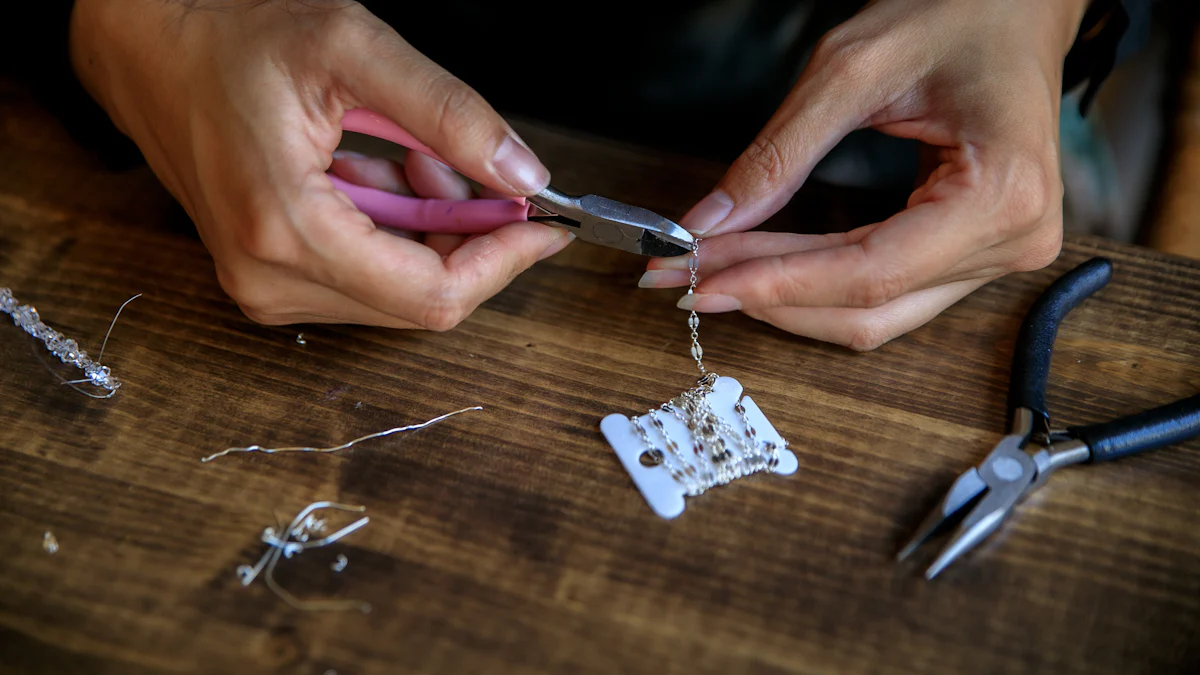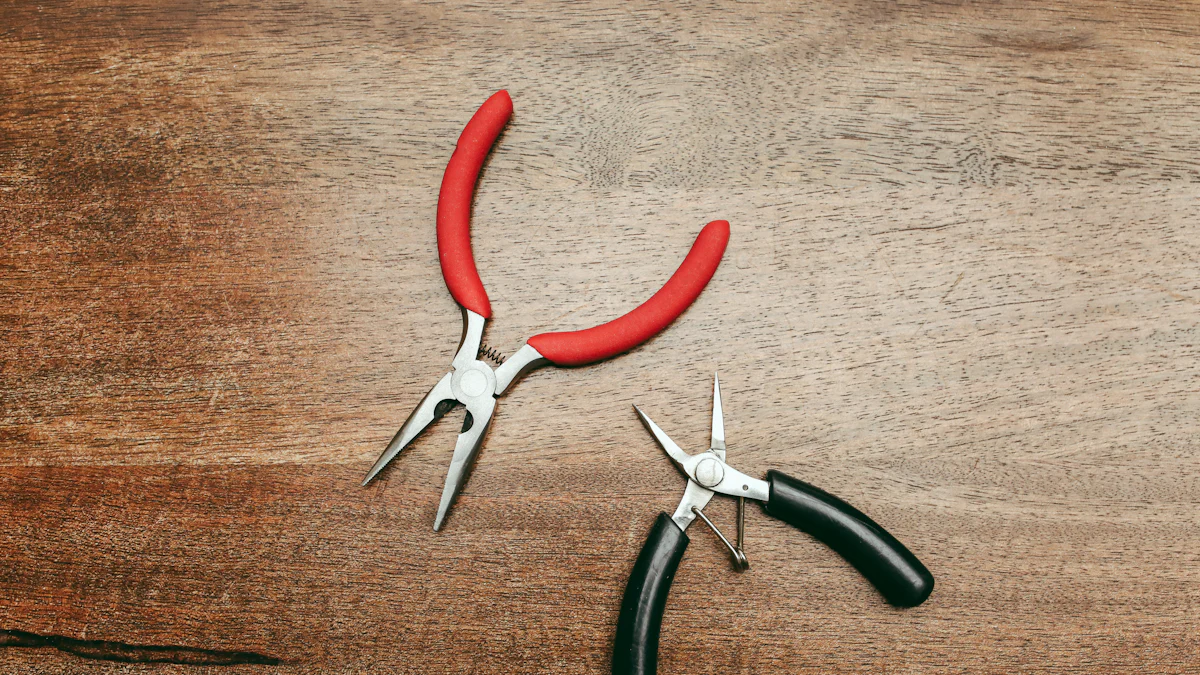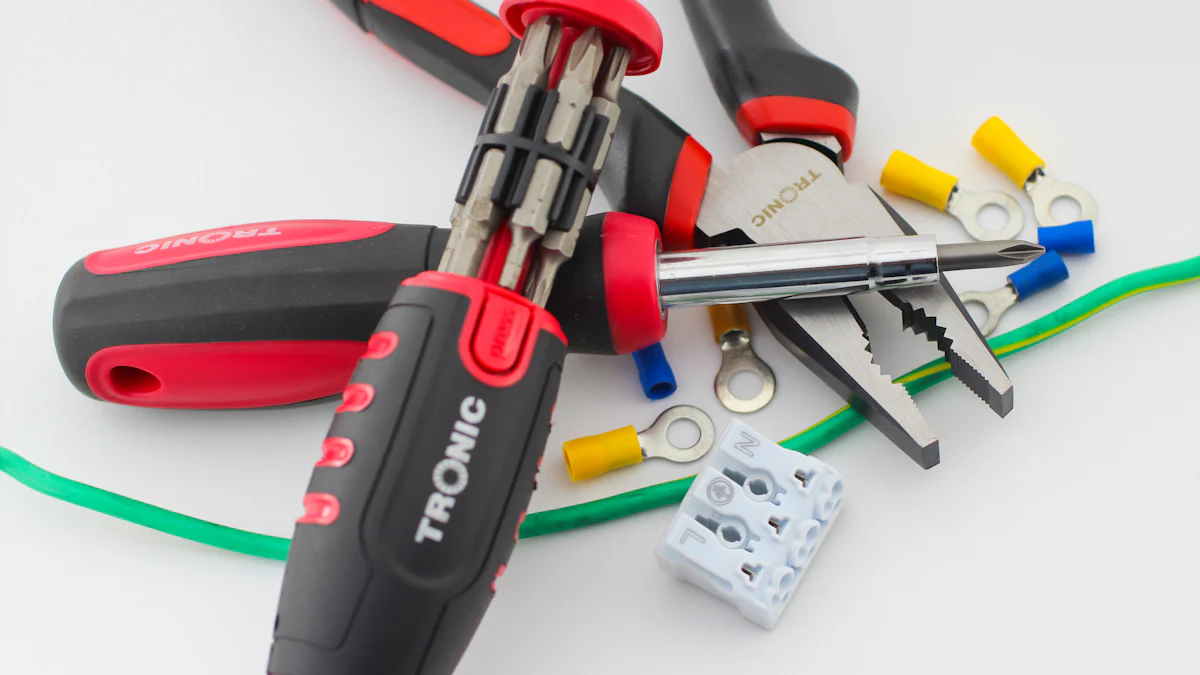
A hand wire bender tool is a specialized device designed to bend wires into precise shapes. This tool finds applications in various fields, such as hobby projects, industrial tasks, and custom DIY creations. Mastering the hand wire bender tool ensures accuracy, efficiency, and prevents damage to materials. Tools like the E/Z Bender Wire Forming Tool and the Bulldog Wire Bender offer specific features for different bending needs, making wire manipulation easier and more effective.
Understanding the Hand Wire Bender Tool

What is a Hand Wire Bender Tool?
Basic Definition
A hand wire bender tool is a manual device designed to bend wires into specific shapes. This tool uses leverage and precision to manipulate wires without causing damage. The design often includes handles, rotating parts, and slots to hold the wire securely.
Common Uses
The hand wire bender tool serves various purposes across different fields:
- Hobby Projects: Creating intricate designs in jewelry or model making.
- Industrial Tasks: Forming components for machinery or electrical systems.
- Custom DIY Creations: Crafting unique items like sculptures or custom fixtures.
Importance of Using the Right Tool
Ensuring Precision
Using the correct hand wire bender tool guarantees precise bends. Precision is crucial in applications like RC models and heavy-duty tasks. Tools like the E/Z Bender Wire Forming Tool provide accuracy and control, essential for delicate operations.
Pensalabs.com states, “D.I.Wire Pro definitely made the life of a small batch producer like myself way easier than bending the hardened stainless steel wire by hand.”
Avoiding Damage to Materials
Selecting the appropriate hand wire bender tool prevents material damage. Incorrect tools can cause kinks or fractures in the wire. For instance, the Bulldog Wire Bender is ideal for heavy gauge wires, ensuring smooth bends without compromising the wire’s integrity.
Alibaba.com offers a variety of bending machines, ensuring customers find one that suits their needs and budget.
Preparing to Use the Hand Wire Bender Tool
Securing the Wire Properly
Types of Wires
Different wires require different handling techniques. Hand wire bender tool users often work with copper, aluminum, and stainless steel wires. Copper wires offer flexibility and ease of bending. Aluminum wires provide lightweight properties but need careful handling to avoid kinks. Stainless steel wires require more force due to their rigidity.
Techniques for Securing
Properly securing the wire ensures accurate bends. Use clamps or vices to hold the wire in place. Position the wire in the hand wire bender tool‘s slot. Ensure the wire remains straight and taut. This setup prevents slippage during the bending process.
Essential Tips Before Starting
Starting the Bend Farther In
Begin the bend farther from the wire’s end. This technique distributes stress evenly along the wire. Avoid excessive force on one spot. This method reduces the risk of wire breakage. The hand wire bender tool provides leverage for smooth bends.
Using Spacers and Washers
Spacers and washers aid in achieving precise bends. Place a spacer between the rotating piece and the base of the hand wire bender tool. This setup allows for smoother rotations. Washers help in maintaining even pressure on the wire. These accessories enhance the tool’s efficiency.
Leveraging for Large Wires
Large wires require additional leverage. Use longer handles on the hand wire bender tool. Apply steady pressure to avoid over-bending. Leverage helps in bending thick wires without causing damage. This approach ensures clean and accurate bends.
Step-by-Step Guide to Using the Hand Wire Bender Tool

Initial Setup
Choosing the Right Tool
Selecting the appropriate hand wire bender tool ensures successful wire manipulation. Consider the wire type and thickness. For delicate tasks, use a tool with fine adjustments. For heavy-duty applications, choose a robust tool like the Bulldog Wire Bender.
Setting Up Your Workspace
A well-organized workspace enhances efficiency. Clear the area of unnecessary items. Ensure adequate lighting for visibility. Secure the hand wire bender tool on a stable surface. Keep essential accessories like spacers and washers within reach.
Bending Techniques
Basic Bends
Basic bends form the foundation of wire manipulation. Insert the wire into the hand wire bender tool‘s slot. Apply steady pressure on the handles. Rotate the tool to achieve the desired angle. Release the pressure gradually to avoid kinks.
Complex Bends
Complex bends require precision and control. Use spacers to maintain even pressure. Gradually increase the bending angle. For intricate designs, make small adjustments. Tools like the E/Z Bender Wire Forming Tool offer enhanced control for detailed work.
Finishing Touches
Checking the Bend
Inspect the bend for accuracy. Ensure the wire follows the intended shape. Look for any signs of stress or damage. A precise bend indicates proper use of the hand wire bender tool.
Making Adjustments
Make necessary adjustments to perfect the bend. Reinsert the wire into the hand wire bender tool if needed. Apply gentle pressure to correct minor deviations. Avoid over-bending to prevent wire fatigue.
Types of Hand Wire Bender Tools and Their Uses
Tools for Specific Applications
RC Models
E/Z Bender Wire Forming Tool serves the hobby industry. This tool bends wire from 0-90 degrees. It creates Z-Bends, L-Bends, and landing gear. The tool includes two forming dies for precise wire bending. Enthusiasts use this tool for RC models due to its accuracy and versatility.
Heavy-Duty Applications
Bulldog Wire Bender excels in heavy-duty tasks. This tool bends large wires in tight locations. The ergonomic design ensures comfort during use. The tool includes smooth dowels for better gripping. Users can bend up to 500 copper with ease. This tool prevents cable damage and maintains a safe bend radius.
Custom Tools
DIY Tutorials
DIY enthusiasts often create custom wire benders. Online tutorials guide users through the process. These tutorials provide step-by-step instructions. Users can build tools tailored to specific needs. Custom tools offer flexibility and cost savings.
Modifications for Specific Needs
Modifying existing tools enhances their functionality. Users can add features like longer handles for leverage. Adjusting the tool’s slot size accommodates different wire gauges. These modifications improve efficiency and precision. Customizing tools ensures they meet unique project requirements.
Mastering the hand wire bender tool requires practice and dedication. Key points include understanding the tool’s applications, securing wires properly, and using essential tips for precise bends. Practicing these techniques will enhance proficiency and confidence.
Amazon Customer: “These benders are simply awesome. Exceptional quality. No more struggling with bending 500 copper.”
For further learning, explore additional resources like instructional videos and DIY tutorials. These materials provide valuable insights and step-by-step guidance. Embrace the journey of mastering the hand wire bender tool and unlock its full potential.
See Also
The Definitive Manual for Warm Winter with Soft Sock
Discovering Diverse Sock Options for Both Genders
